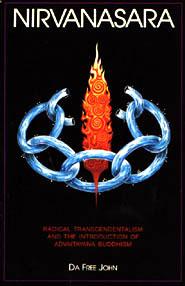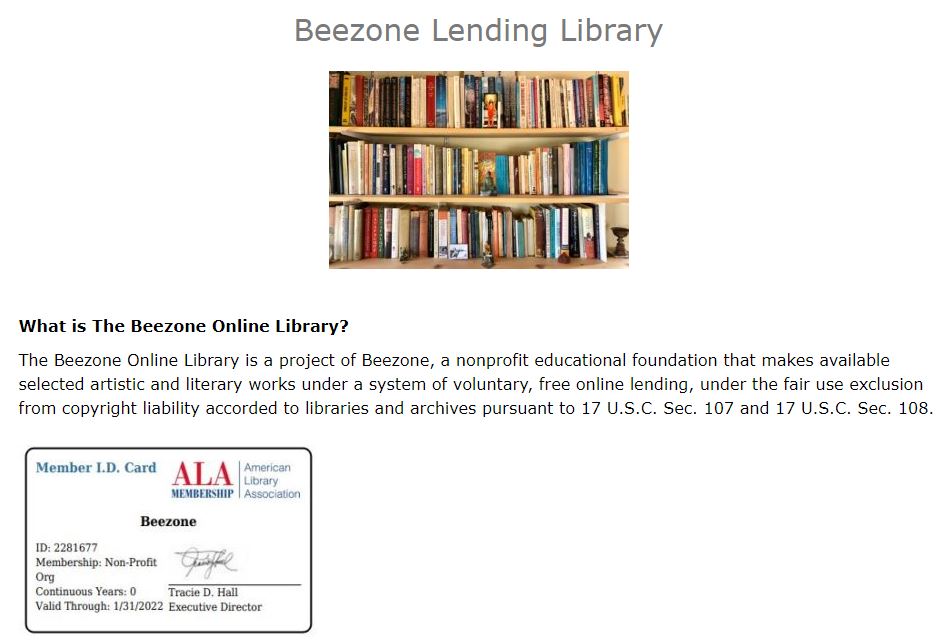For further reading go to

Radical Transcendentalism and the Introduction of Advaitayana Buddhism
Da Free John (Adi Da Samraj)
1982
Table of Contents
Introduction by Georg Feuerstein
1. From Scholarship to Understanding
How does one introduce a great adept (maha-siddha), a living Buddha, and his compassionate, prophetic teaching? In the following essay I have given my own answer to this question. I have tried to keep myself open to, and to faithfully represent, the teaching of Master Da Free John (Adi Da Samraj), while at the same time endeavoring to remain sensitive to the naturally skeptical posture which, I suspect, most readers will maintain while perusing this volume (of Nivanasara).
I have written as one who has committed himself to a particular way of life, namely the spiritual path hewn out by Master Da. Simultaneously, I have brought to bear on my presentation whatever scholarly skills I have acquired in my professional career as an indologist. I must state at the outset that in making this communication I have had only one purpose in mind: to aid the understanding of those who, like myself, approach life rationally but who, nevertheless, are capable of acts of intuitive recognition and spiritual appreciation.
This book will only make sense if the reader is willing to at least seriously consider two possibilities (which I myself have come to accept as facts):
1. There is a transcendental Reality.
2. This transcendental Reality is the Condition of body, mind and world.
These are bold propositions for the agnostic and pragmatist, but this book does not defer to the professional skeptic or materialist at all. It is mainly directed at all those who sit on the fence: those who are too wise to fool themselves with materialistic values and concerns, but also too indecisive to take the plunge into spiritual life; those who wish their life would be different but do not know how to change it; those who are tired of the thraldom to arid scholasticism and quietly hunger for a more meaningful way to use their cerebral dexterity; those who are prepared to change their life but have been waiting for the right stimulus and context.
It is my heartfelt hope that this book can tip the balance for them-to the side of a full spiritual life.
For those who can see eye to eye with the above two propositions, it will only be a small step to the acceptance of the idea that in some individuals the transcendental Essence is “out front,” that they have, paradoxically, died as separate entities while continuing to be alive, and that this has nothing whatsoever to do with schizophrenia. Once this has been understood, it will not be too difficult to further realize that such rare beings could indeed have a special function to fulfill in spiritual life. Where a real leap of understanding (rather than of faith) has to be made is in the recognition that the adept, or the enlightened being, could be instrumental in one’s personal spiritual endeavor.
Although this volume contains essays by Master Da Free John which do not match the scholarly stereotype of the adept as a “naive bumpkin,” as Master Da put it recently, nevertheless they are all authored from the adept’s point of view. Master Da concedes that there may have been adepts who would fit the “naive bumpkin” myth, invented by scholars mainly to buffer their profession against interference by adepts. However, the higher adepts, especially of the sixth and seventh stages of spiritual life, typically communicate a very sophisticated teaching (see pp. 22ff.). Such adepts, having transcended the discursive mind, operate from within a different frame of consciousness. Thus, Master Da Free John creates his essays spontaneously, and they are not merely the product of his ruminations on what he has studied. In point of fact, Master Da reads very little, and the ideas which he expresses are simply grounded on his “psychic relationship” to the traditions and to literature.
His communications are an expression of his “free attention,” and they freely and directly reflect, as he puts it, an ultimate transcendental consciousness. Hence the “adept’s point of view” is, quite simply, to serve the enlightenment of others. So, even whilst Master Da is responding on a level of consideration that scholars will presumably find stimulating, he does not write as a scholar or theoretician nor in order to indulge the scholastic mind. His technical essays on Buddhism and Advaitism are simply a new way of expressing his teaching, and as such they complement his many other oral and written communications.
